Ultra Facial Cream With Squalane
| Phase | Ingredient | Percent (%) | Weight (g) |
|---|---|---|---|
| Phase A | Rose hydrosol (INCI - Rosa Damascena Distillate) | 63.5 | 63.5 |
| Glycerin | 3.0 | 3 | |
| Xanthan gum | 0.3 | 0.3 | |
| Sucrose stearate | 4.0 | 4 | |
| Phase B | Hibiscus oil (INCI - Prunus Amygdalus Dulcis Oil, Hibiscus Sabdariffa Flower Extract) | 6.0 | 6 |
| Avocado oil (INCI - Persea americana) | 3.0 | 3 | |
| Plum Kernel Oil (INCI - Prunus domestica) | 4.0 | 4 | |
| Cetyl alcohol | 3.0 | 3 | |
| Fluid Lecithin (INCI - Phosphatidylcholine, Carthamus Tinctorius (Safflower) Seed Oil, Glycerin, Caprylic/Capric Triglyceride, Alcohol, Sunflower Seed Oil Glyceride, Soy Acid, Ascorbyl Palmitate, Tocopherol) | 2.0 | 2 | |
| Phase C | Vitamin E (INCI - Tocopheryl Acetate, Helianthus Annuus seed oil) | 0.2 | 0.2 |
| Squalene (INCI - Squalane) | 5.0 | 5 | |
| Phase D | Willowbark extract (INCI - Water, Salix Nigra (Willow) Bark Extract) | 3.0 | 3 |
| Potassium sorbate (preservative) | 1.0 | 1 | |
| Rose extract (INCI - ROSA MULTIFLORA FRUIT EXTRACT, GLICERIN) | 1.0 | 1 | |
| Calendula extract (Glycerin, Aqua, Calendula Officinalis Flower Extract) | 1.0 | 1 |
You can help support my website and channel through the “buy me a coffee” page.
Here is the link: https://www.buymeacoffee.com/diycosmetica
Your support helps me keep sharing here more information and more formulas.
This face cream formula was inspired by Kiehl's Ultra Facial Cream. Kiehl's website indicates that this face cream is an ultra-hydrating moisturizer with a unique lightweight texture and lasting 24-hour hydration to leave skin softer, smoother and visibly healthier. The key ingredient is Squalane. They say this cream is perfect for all skin types, including men's and sensitive skin. So, I was inspired and decided to make something similar.
If you want to read about the basics of making creams and lotions, check this post here.

Let's go over the key ingredient: Squalane. Squalane is derived primarily from plant sources such as olives, sugarcane, rice bran, and amaranth seeds. Squalane is a stable form of squalene, a natural compound found in the skin's own lipid barrier. The hydrogenation process that converts squalene to squalane imparts stability and extends its shelf life. Squalane used to be sourced from shark liver in the past, but in recent years, it has also been sourced from plant-based sources, making it ethical and sustainable to use in cosmetics. What makes squalane unique is how similar it is to squalene, a natural substance in our skin. This similarity lets squalane imitate the skin's own way of moisturizing itself. Its unique qualities make squalane an exceptional ingredient: it's very light and doesn't clog pores, which means it's excellent for everyone, even people with oily or acne-prone skin.
Adding squalane to face creams brings many benefits. It moisturizes deeply, making the skin feel soft and full without feeling oily. Squalane also helps rebuild the skin's protective layer, keeping moisture in and harmful elements out. Plus, its antioxidant powers help protect the skin from damage, reducing signs of aging. With its ability to make skin texture and firmness better, along with keeping it hydrated, squalane can really improve how the skin looks. Using a face cream with 5% squalane can make the skin appear healthier and more glowing.
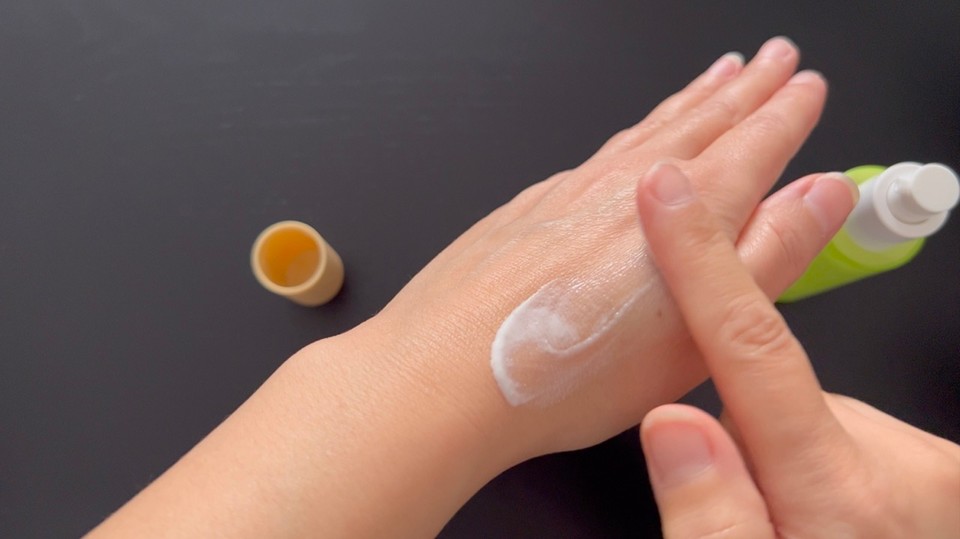
Along with squalane, I combined very nourishing oils to enhance the moisturizing properties of this face cream. I used avocado oil, hibiscus oil and plum Kernel Oil. I didn't use any butters or waxes in this formula, I aimed to achieve a ultra hydrating cream without any "heavy" ingredients. The combination of the liquid oils creates enough hydration and moisturization.
Avocado oil is exceptionally hydrating and can penetrate deep into the skin to provide lasting moisture. Its rich oleic acid content helps to reduce transepidermal water loss, keeping the skin plump, hydrated, and soft. The high content of fatty acids in avocado oil, including omega-3 and omega-6, regenerates the skin's protective barrier. Research suggests that avocado oil may assist in promoting collagen synthesis and reducing inflammation, aiding in the healing process of wounds. You can swap the avocado oil with Argan oil, Grapeseed oil or Marula oil.
The hibiscus oil is a blend of sweet almond oil and hibiscus flower extract; this blend combines the lightweight, deeply nourishing properties of sweet almond oil with the potent, skin-enhancing benefits of hibiscus extract.
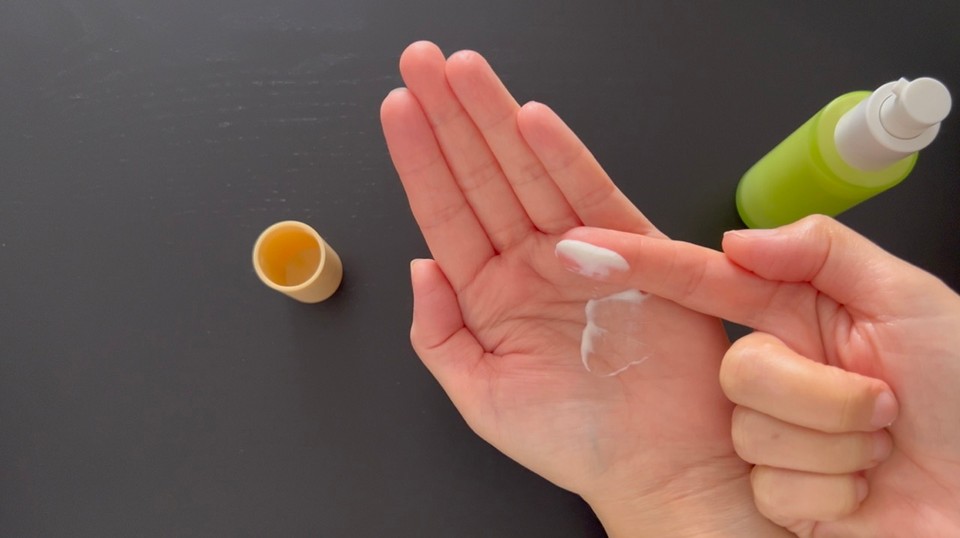
Hibiscus is rich in antioxidants, such as vitamin C and anthocyanins, which help protect the skin from environmental stressors like pollution and UV radiation. These antioxidants combat free radicals, reducing oxidative stress and preventing premature skin aging. Sweet almond oil is lightweight and less likely to clog pores, making this hibiscus oil blend suitable for all skin types, including oily and acne-prone skin. You can use sweet almond oil instead.
Plum Kernel Oil, derived from the seeds of plums, is packed with antioxidants, including vitamins A, C, and E. These antioxidants help protect the skin from environmental stressors like pollution and UV rays. This oil is highly moisturized without being greasy, making it perfect for hydrating the skin deeply while having a light texture and easily absorbed by the skin without clogging pores, making it suitable for all skin types, including oily and acne-prone skin. You can replace the Plum Kernel Oil with Apricot Kernel Oil or Jojoba oil.
I also used fluid lecithin in the oil phase to add more moisturizing properties to the face cream. The fluid lecithin (unlike regular lecithin) is a complex mixture designed to be easily incorporated into emulsions and has a lighter, more easily absorbed texture that is appealing for application on the skin. The lightweight, non-greasy nature of fluid lecithin makes it suitable for a broader range of skin types, including oily and acne-prone skin, without clogging pores. Another difference between fluid lecithin and regular lecithin is its color. Regular lecithin is dark amber, while fluid lecithin is more beige-transparent. You can replace the fluid lecithin with regular lecithin. If you use regular lecithin, take into consideration that your final product will have a beige-yellowish color.

I didn't use fragrance in this formula. Instead, I used rose hydrosol (which you can replace with distilled water) to achieve a light rose scent in the final product.
For an emulsifier, I used Sucrose Stearate. Sucrose stearate is a natural emulsifier derived from sugar and stearic acid. Sucrose stearate stands out for its mildness, making it an ideal ingredient for products designed for sensitive skin types. It avoids causing irritation or dehydration. More than just an emulsifier, sucrose stearate is also a moisturizing agent, keeping the skin hydrated. This emulsifier creates a lightweight and silky texture, which absorbs quickly into the skin without leaving a greasy residue. I added the emulsifier to the water phase; the emulsifier will dissolve in the water phase when heated to around 70-75°C.
You can use Glyceryl Stearate to replace the Sucrose Stearate as an emulsifier. If you use Glyceryl Stearate, you'll need to add it to the oil phase, not the water phase.
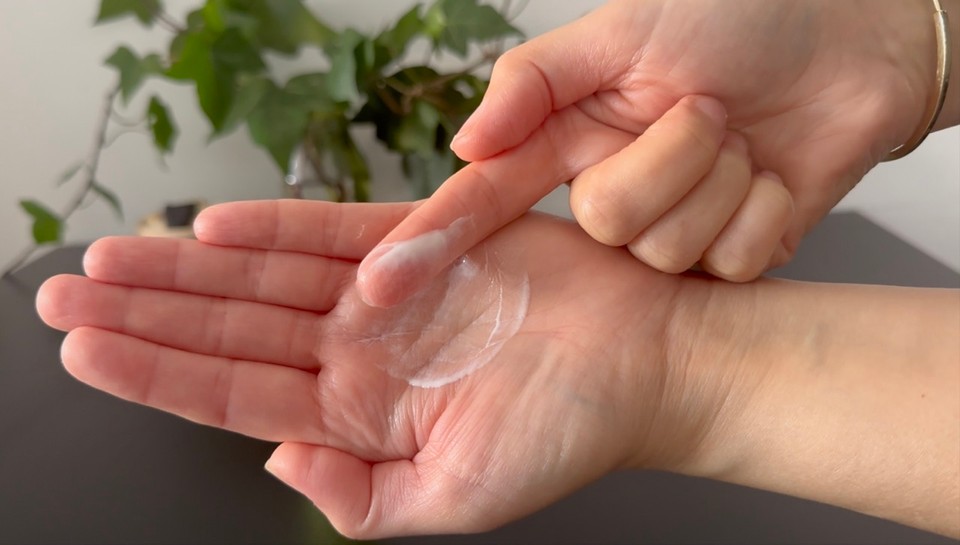
More active ingredients I used in this formula are the extracts. I used Willowbark extract, Rose extract and Calendula extract. Willow bark extract helps to reduce inflammation; it can soothe redness and calm the skin; it also contains flavonoids and tannins, powerful antioxidants and anti-bacterial properties. Willow bark's antibacterial properties also enhance the preservation of the product. You can use other extracts than those I used, such as Centella Asiatica, Green Tea, Aloe Vera, Pomegranate or Ginseng extract.
The final texture of this face cream is super silky and light; it absorbs quickly without any greasy feeling or heaviness on the skin.
Use the calculator to adjust the amount of cream you wish to make.
Method:
- In a heat-resistant beaker, add the water phase (phase A) ingredients. Start with the gum and glycerin. Make a slurry by combining the glycerin and the gum. Add the rose hydrosol and stir to combine. Add the sucrose stearate and mix. (The sucrose stearate will not dissolve until after heating the water phase). Cover the water phase with aluminum foil.
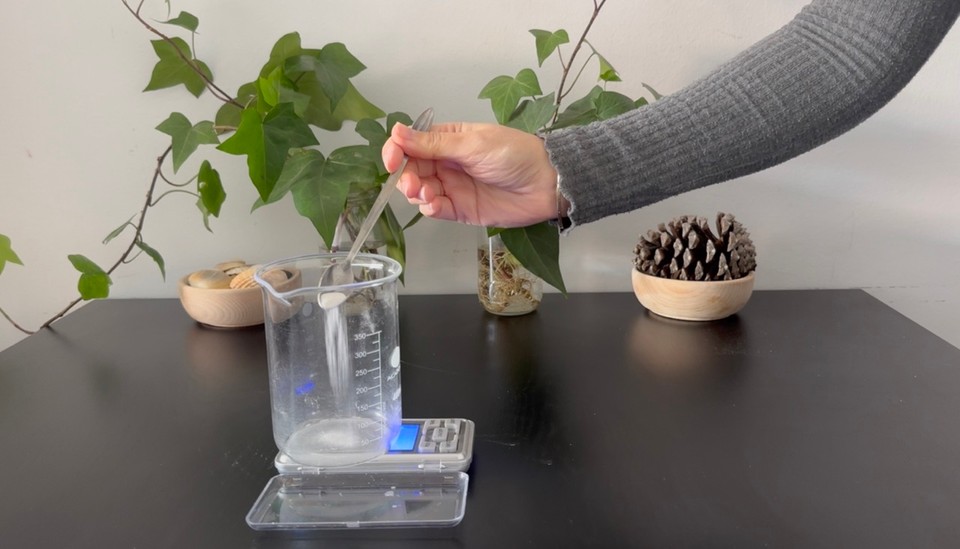

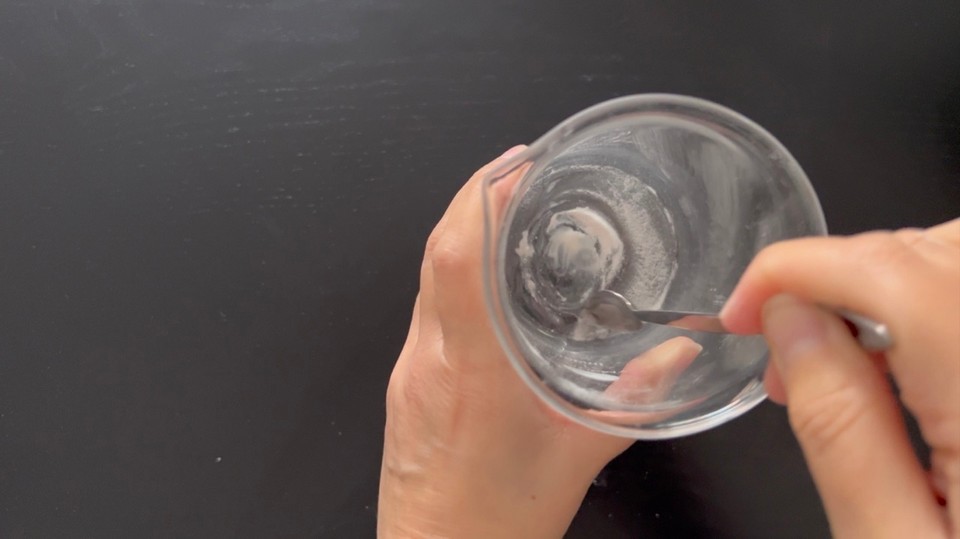
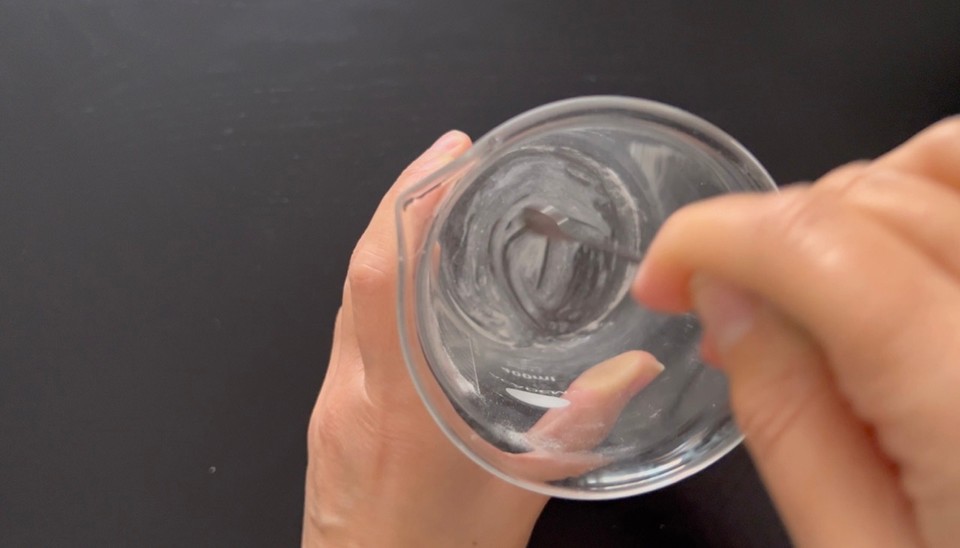
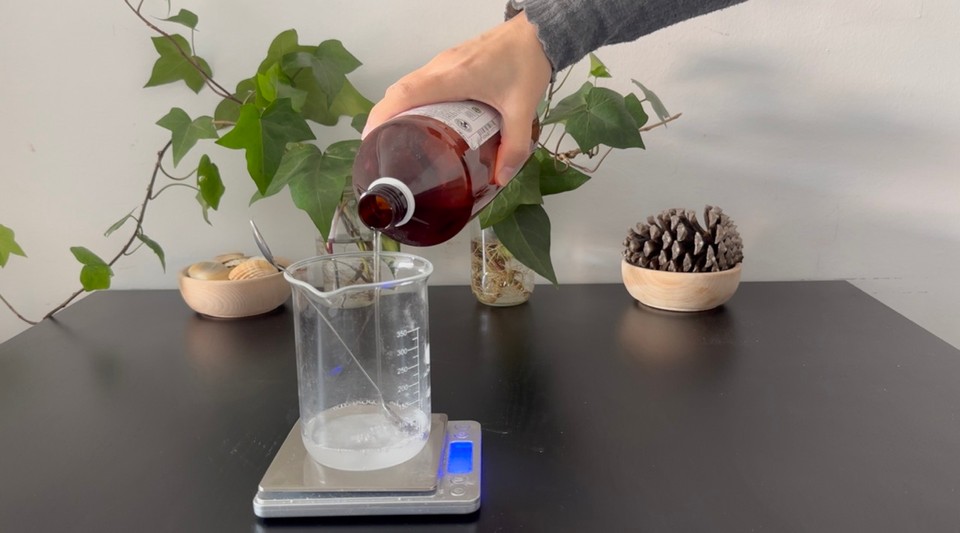
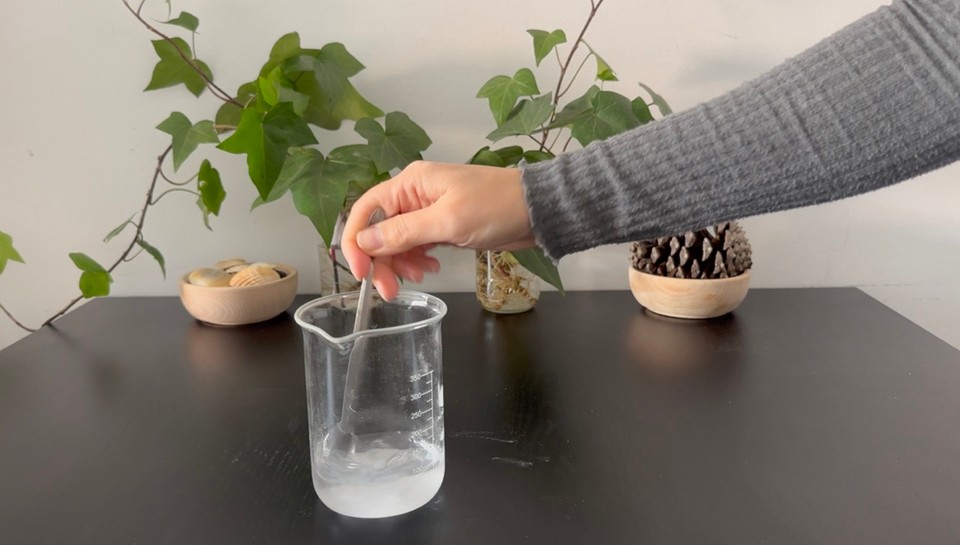
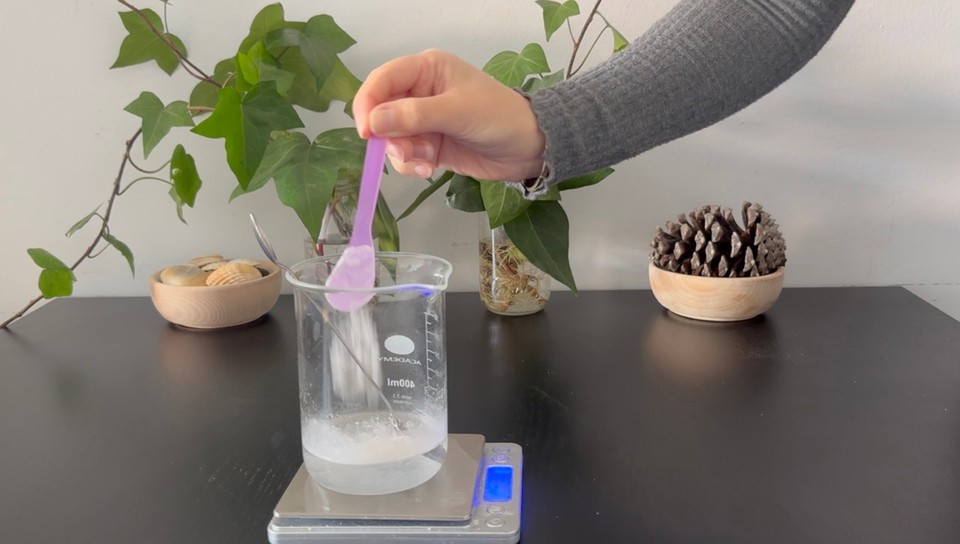
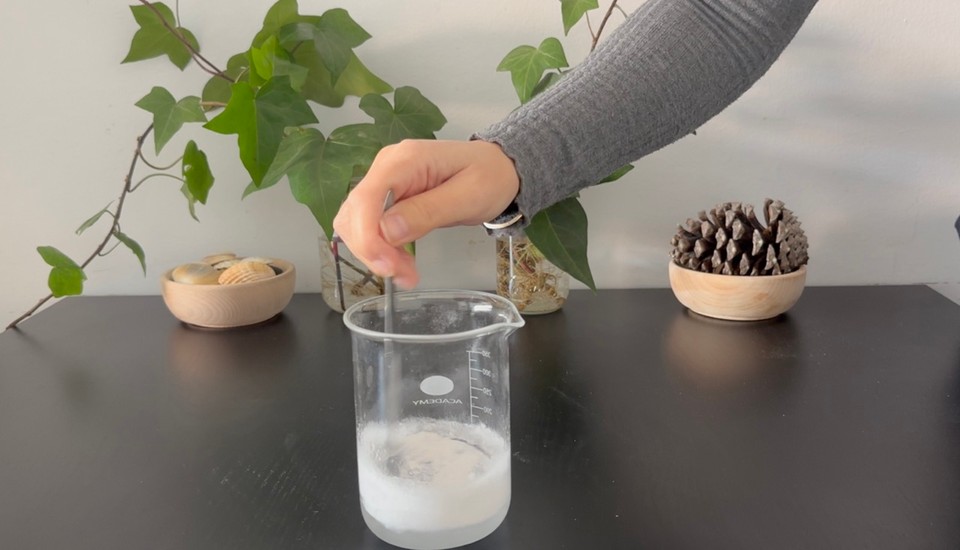
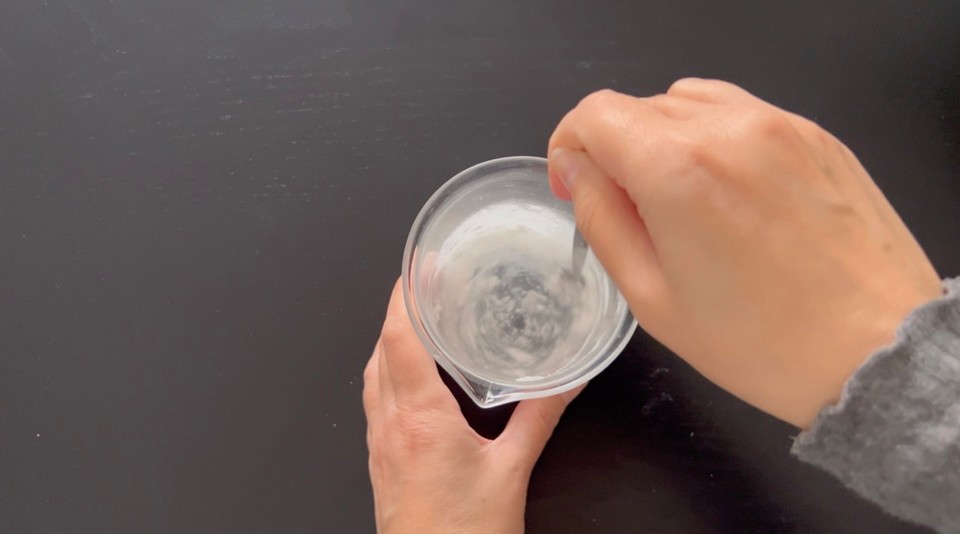
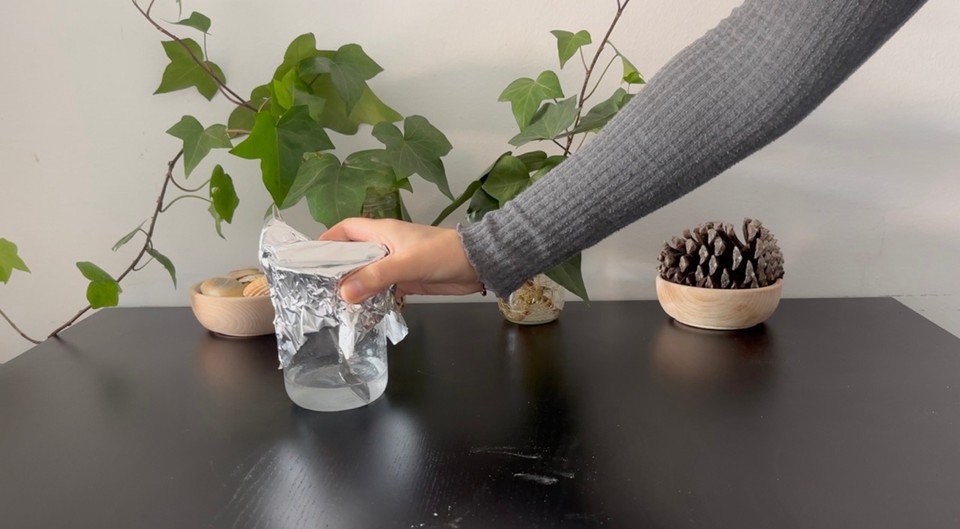
- In another heat-resistant beaker, add the oil phase (phase B) ingredients.
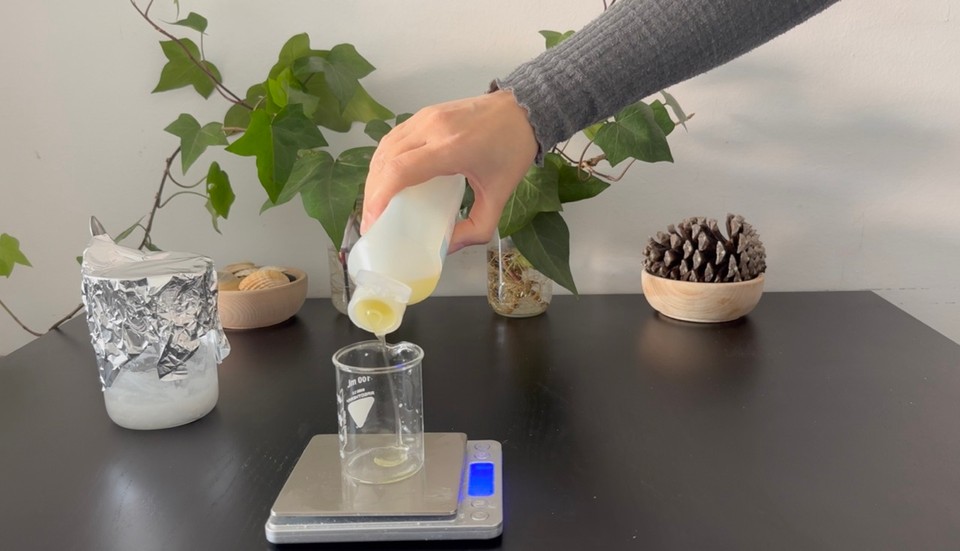
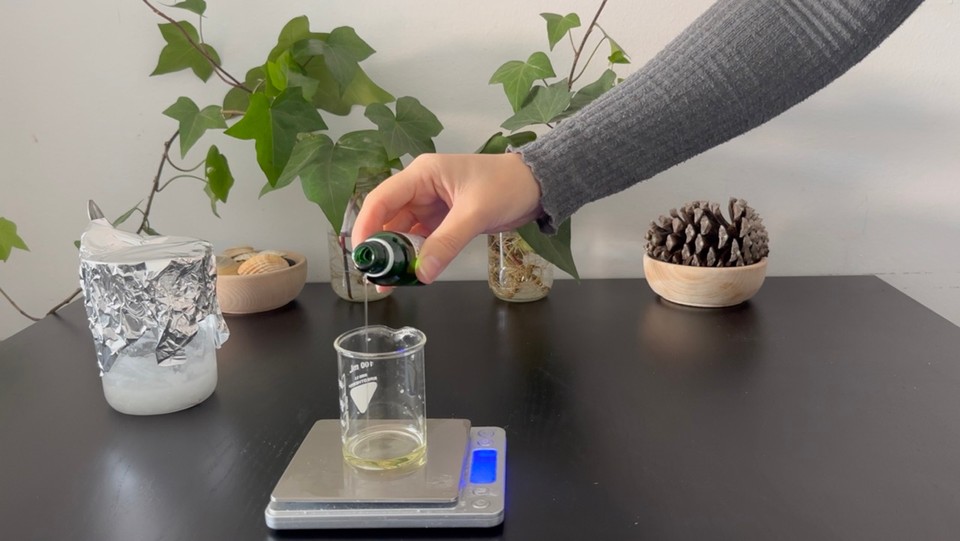
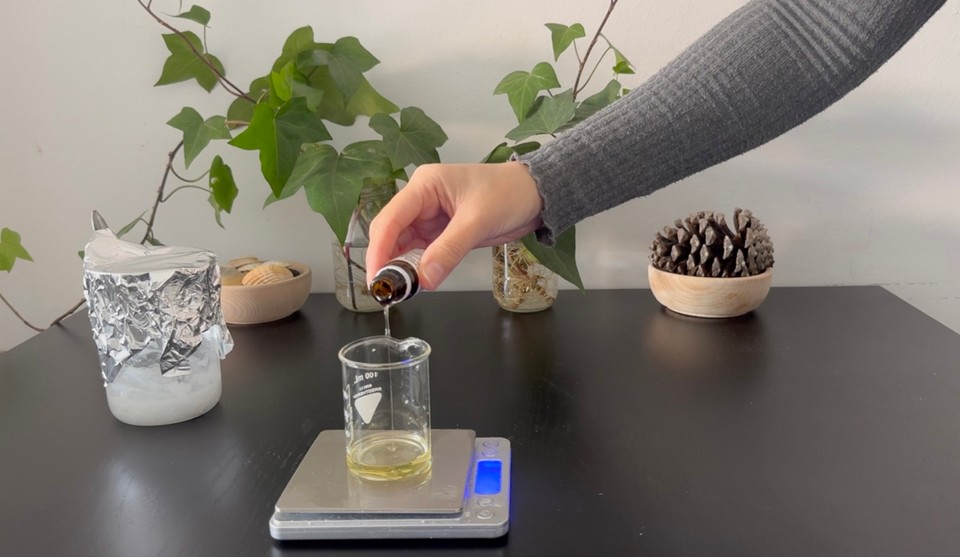

- Place the oil and water phases into a double boiler on medium heat (for 25 minutes) to melt the oil phase. Cover the water phase beaker with aluminum foil to minimize water evaporation. (when working with bigger batches, you should scale your water phase before heating and after removing it from the heat. Calculate the water evaporated during the heating and add the missing amount to the water phase beaker).
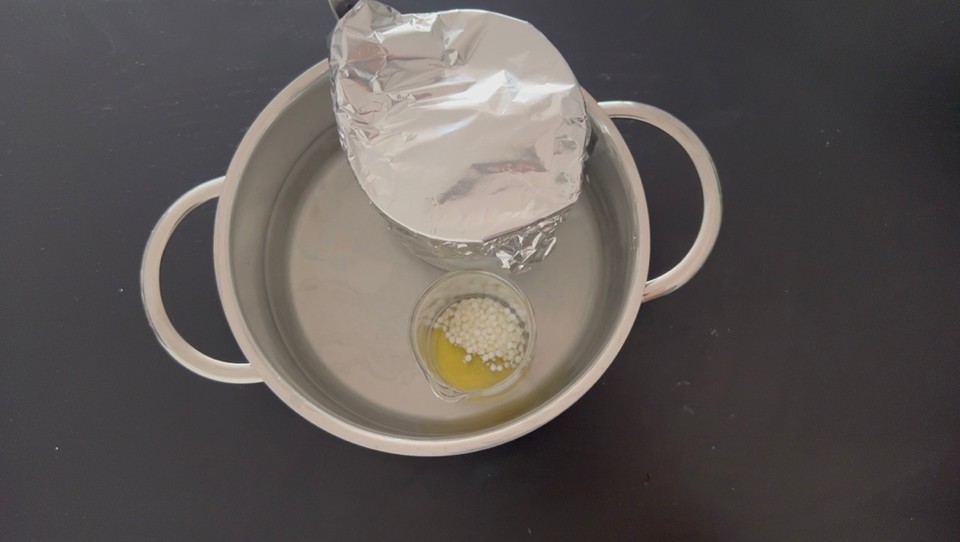
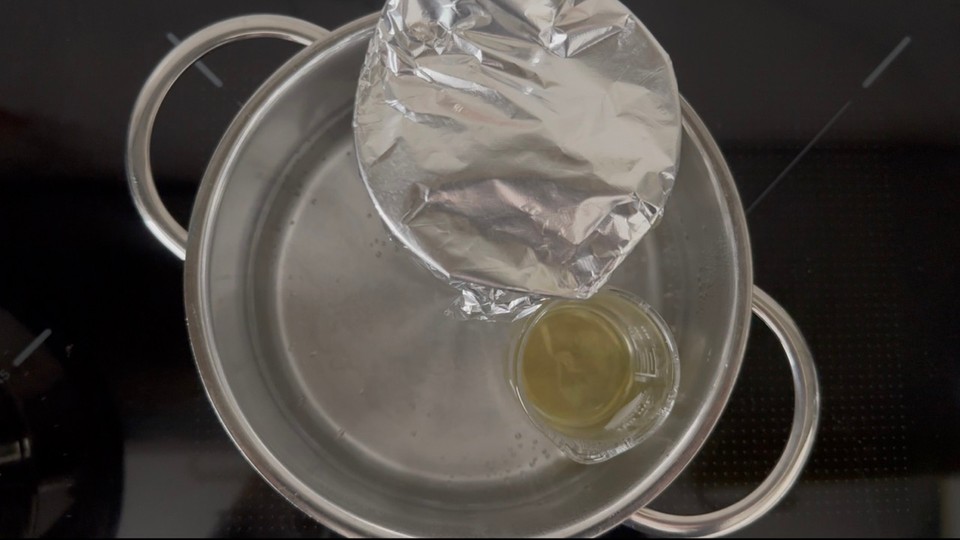
- Prepare phase C in a different container and set it aside.
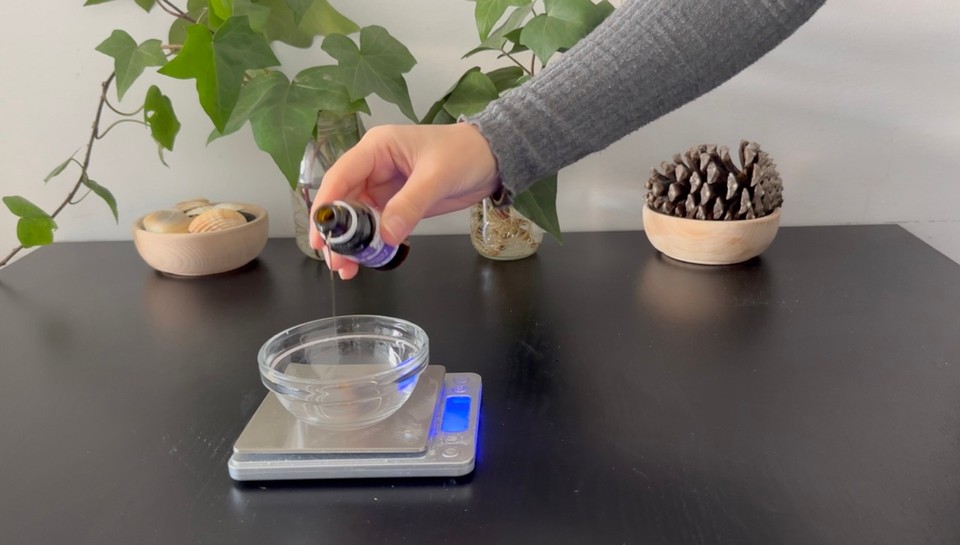
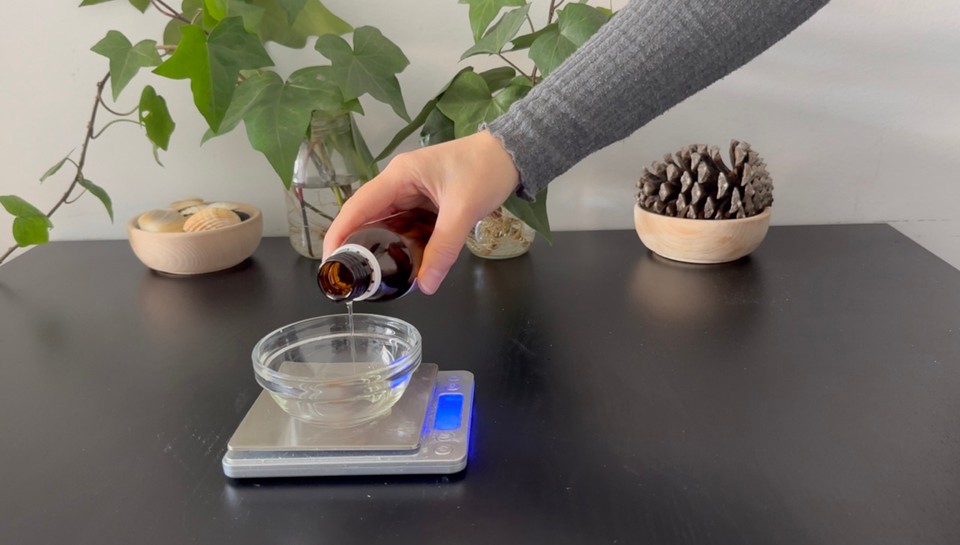
- Prepare phase D in a different container and set it aside. Mix to dissolve the preservative if it is a powder.
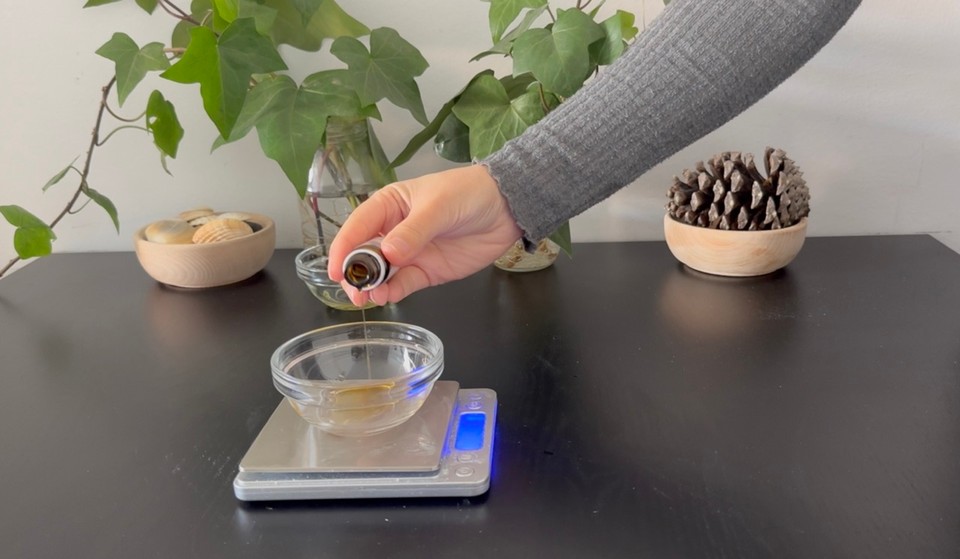
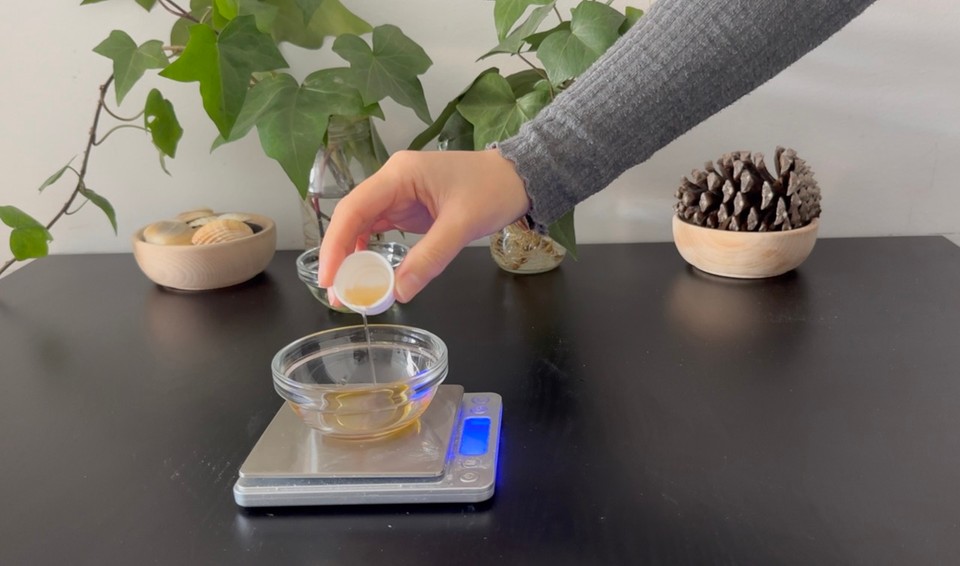

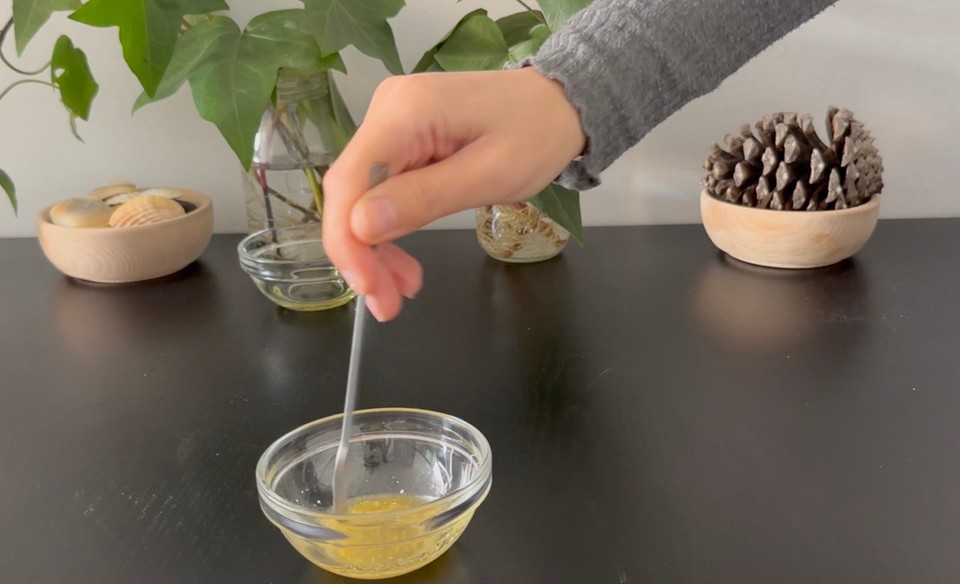
- Remove phases A and B from the heat after 25 minutes. Combine phases A and B. Use a high-speed blender for 3-4 minutes to combine a stable emulsion.
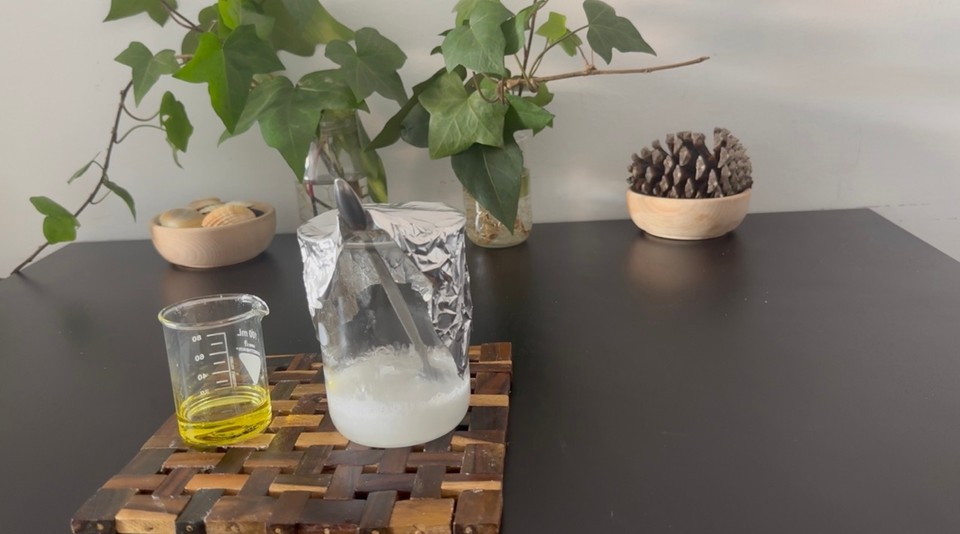
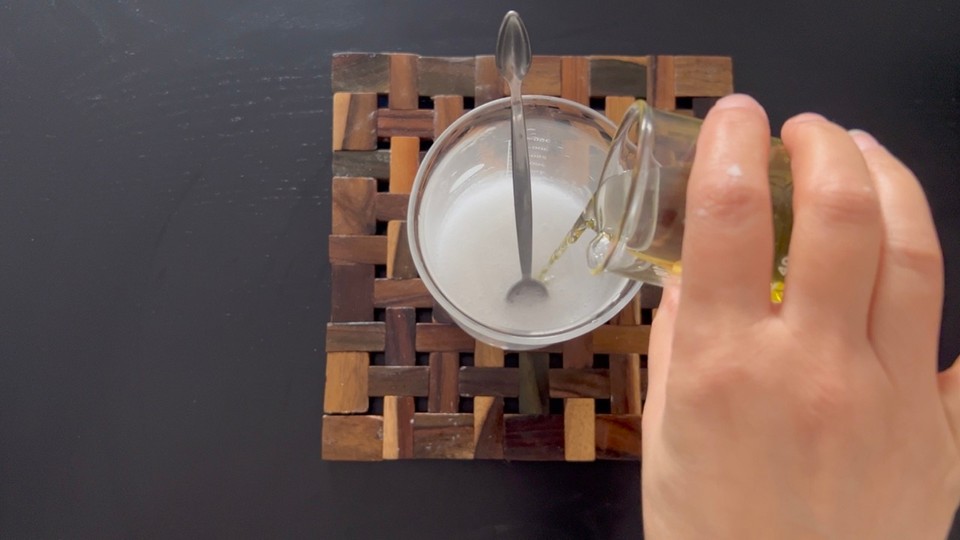
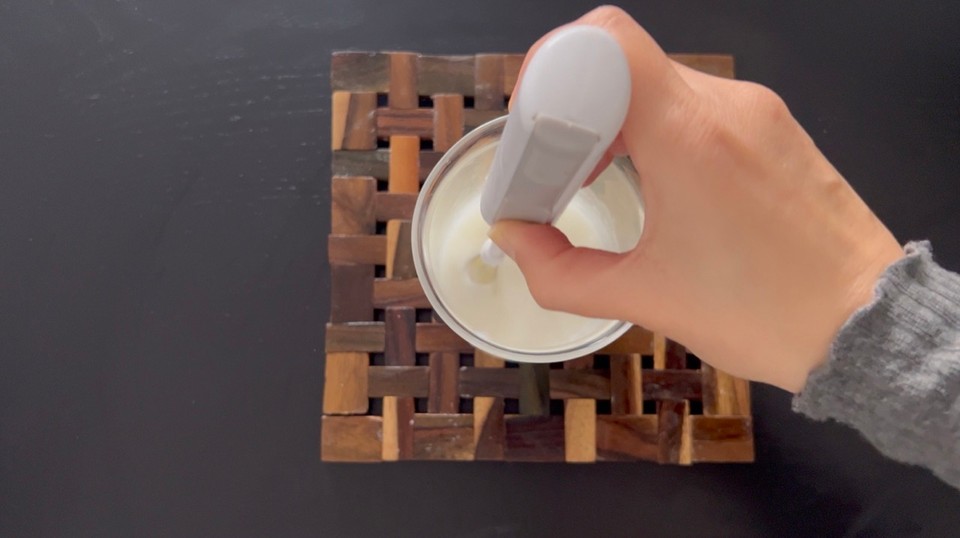
- When the emulsion cools to less than 40 degrees Celsius, add phase C and mix well to combine.

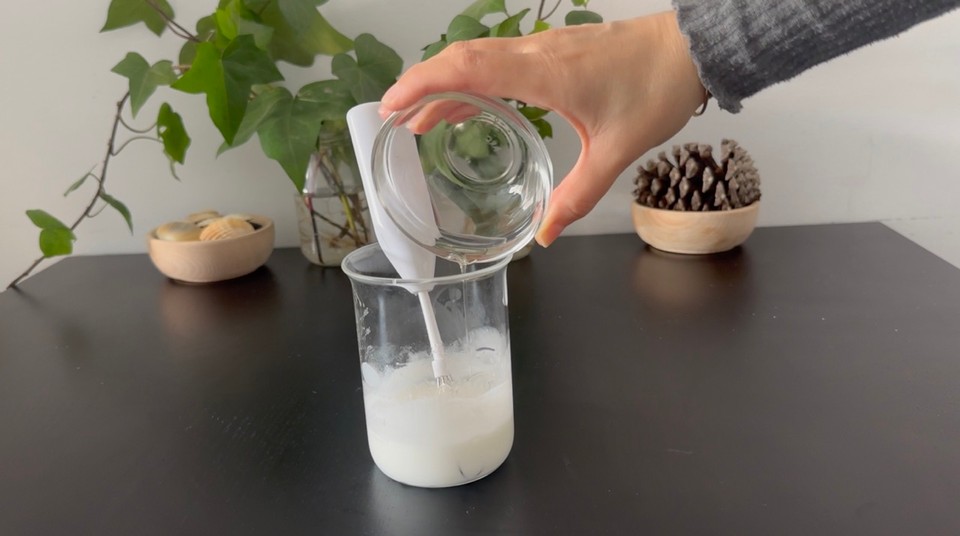
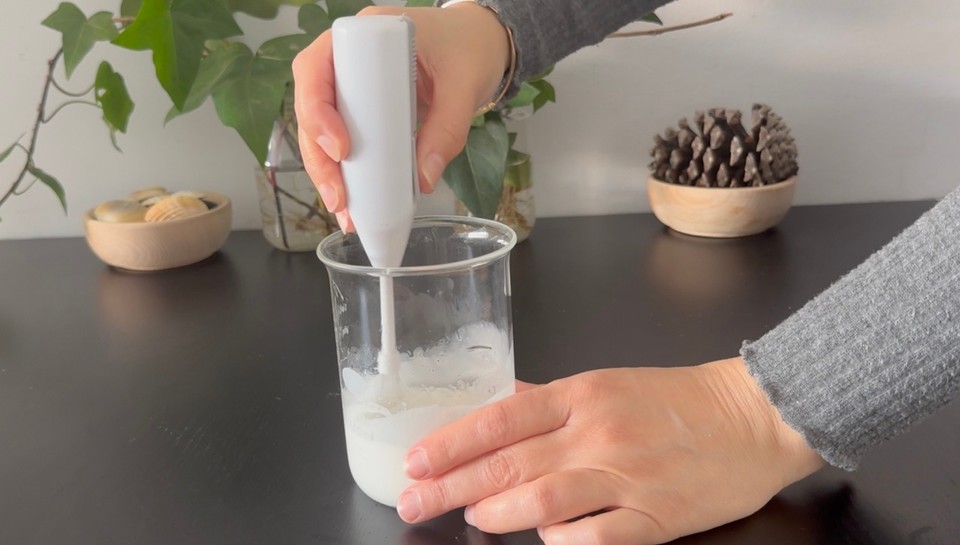
- Add phase D and mix.
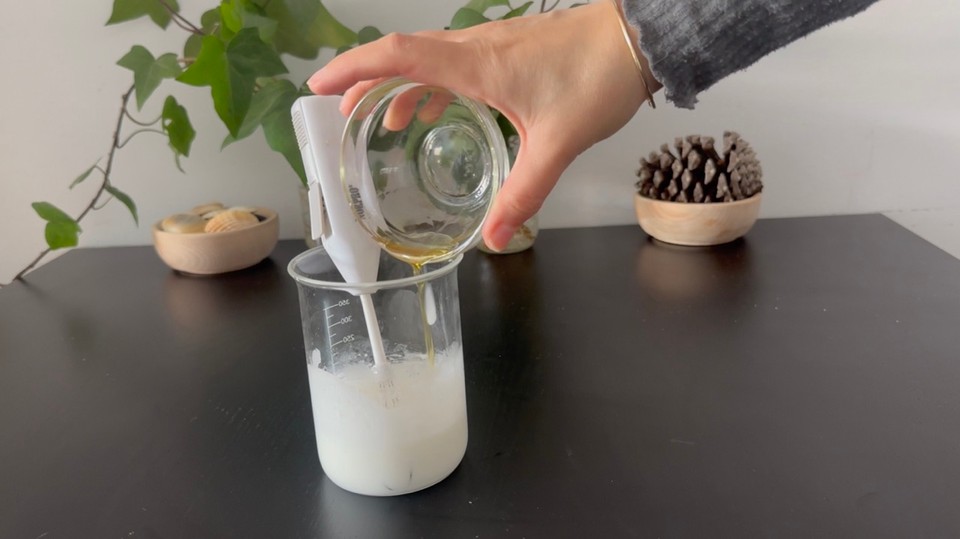
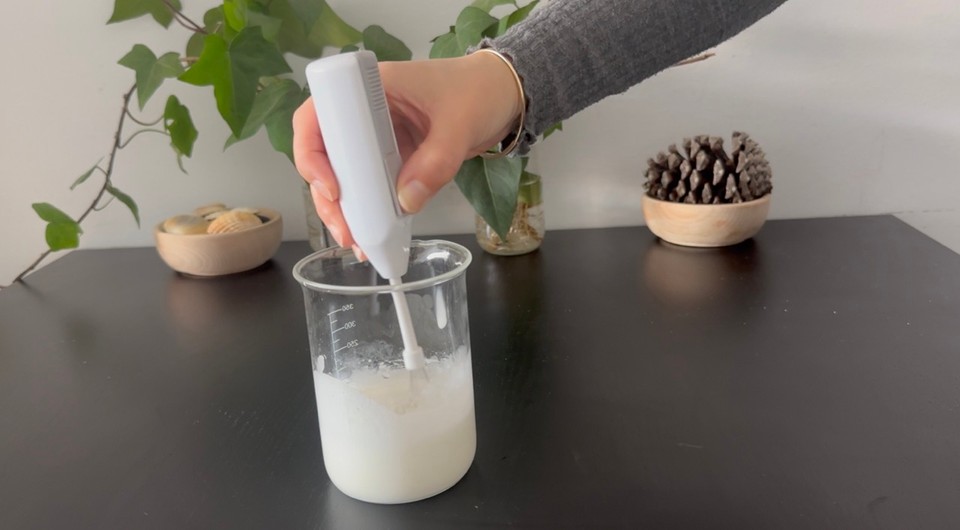
- Check PH level and adjust if necessary. To read more about PH adjustments in cosmetics, check this post. PH should be 5.5. I added a few drops of lactic acid 80% solution to lower the PH to be 5.5.
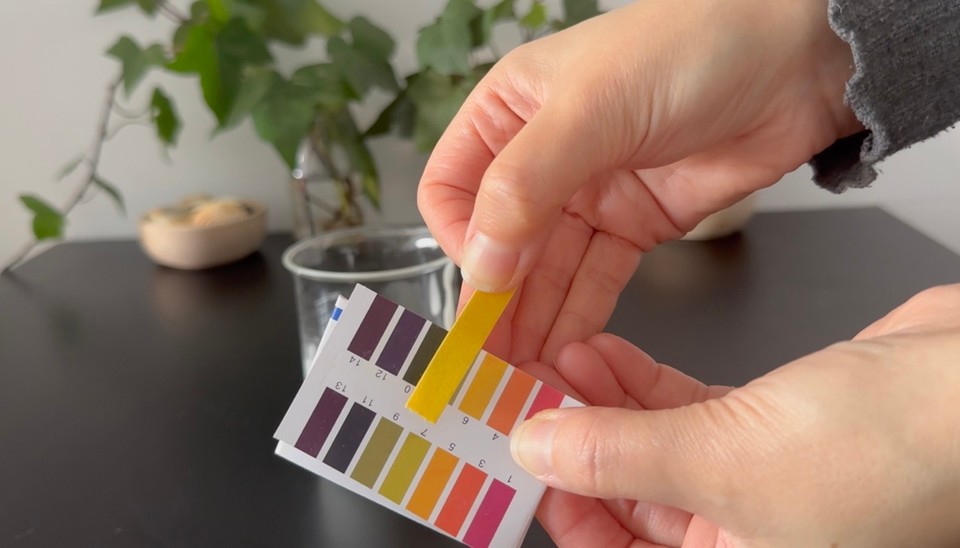
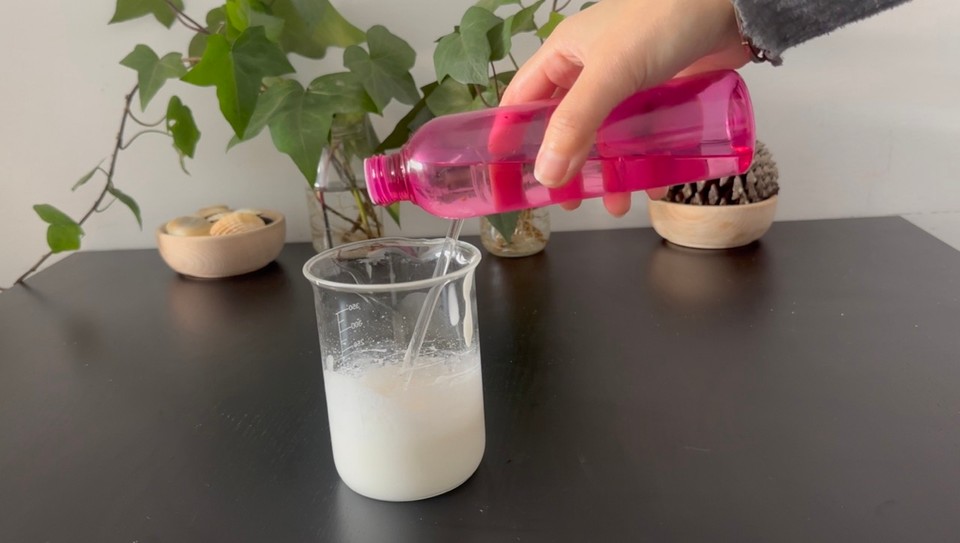
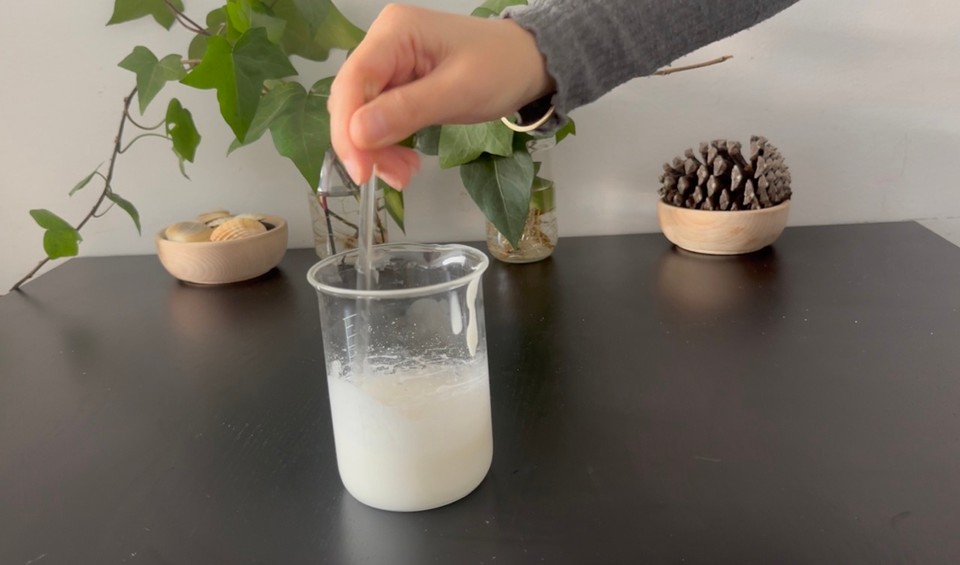
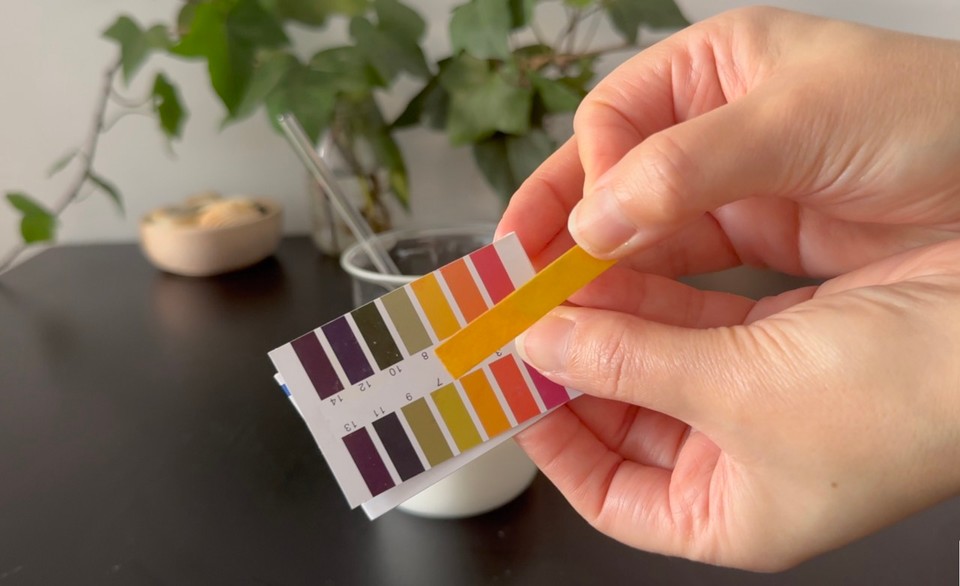
- Pour into the container of choice. Final consistency will form after a few hours.
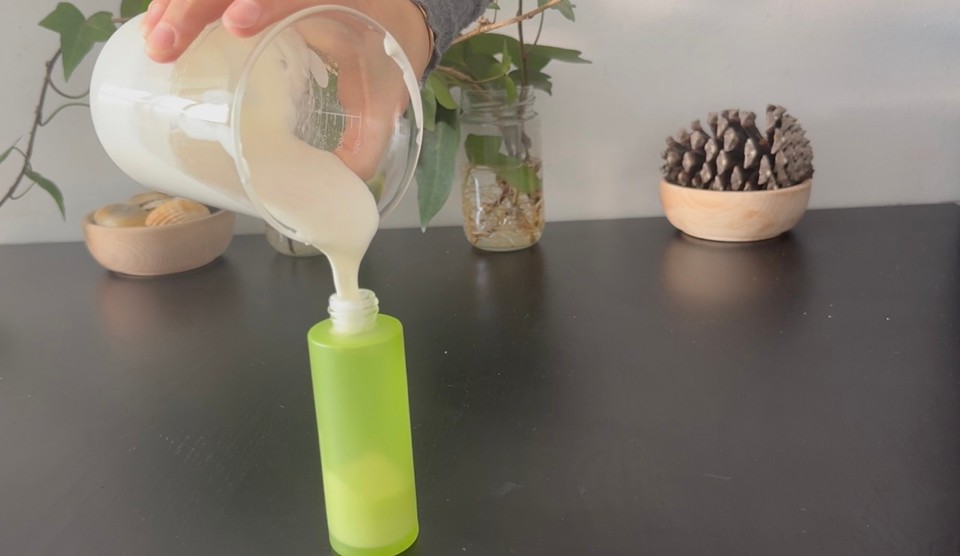
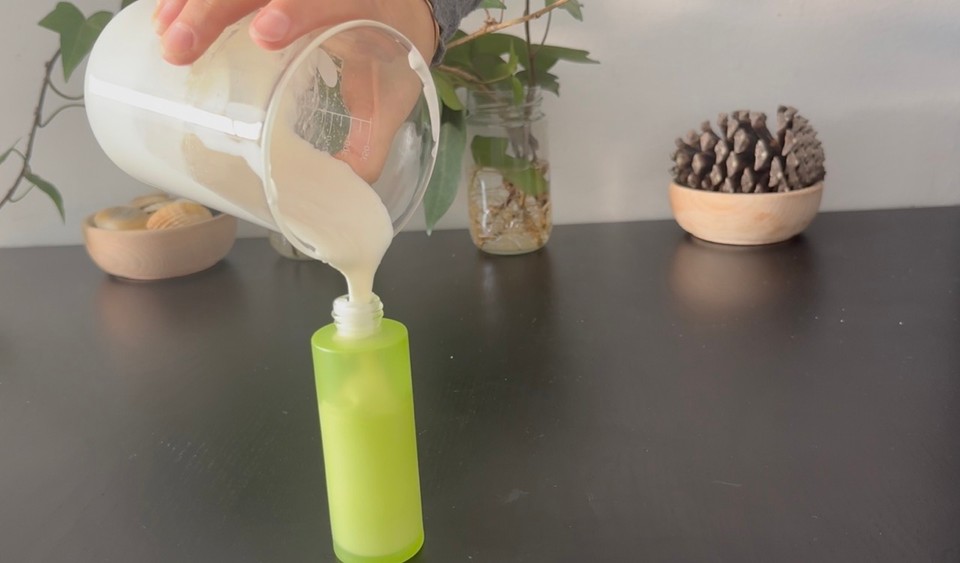
You can read more about Squalene here:
https://www.sciencedirect.com/science/article/abs/pii/S0927776522004623
https://www.ncbi.nlm.nih.gov/pmc/articles/PMC6253993/
https://health.clevelandclinic.org/squalane
https://www.healthline.com/health/squalane
